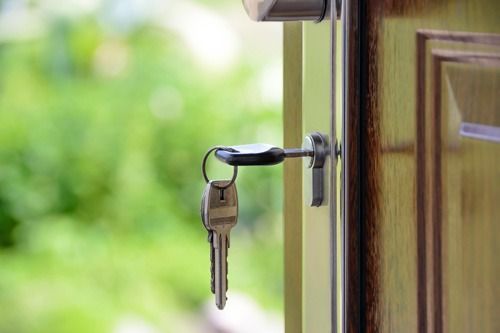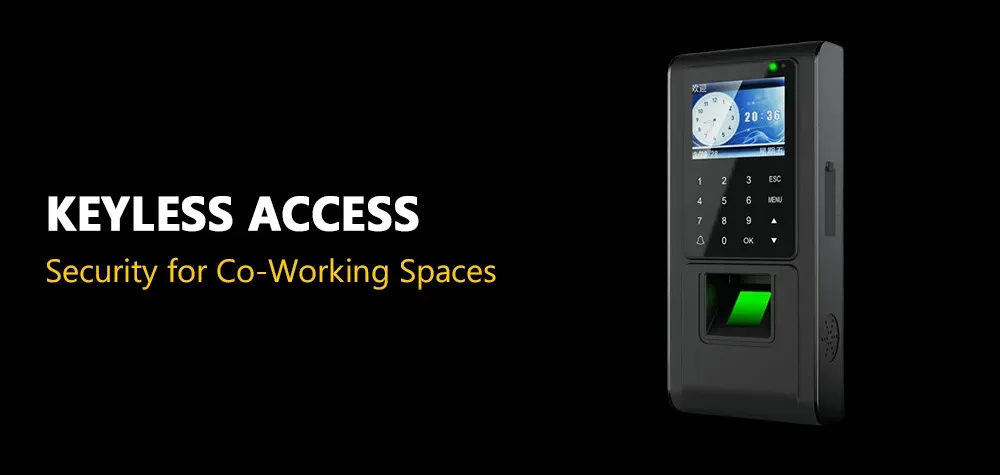Unlock a door without a key
HOW TO UNLOCK A DOOR WITHOUT A KEY
Getting locked out of a room or a building can be a frustrating and stressful experience, especially when you don't have access to a key. Whether it's due to misplacing your keys, a broken key, or simply forgetting them inside, finding yourself on the wrong side of a locked door can happen to anyone, anywhere. However, being locked out doesn't necessarily mean you're completely helpless. Knowing alternative methods to unlock a door without a key can be a lifesaver in such situations.
Learn how to open a door without a key using simple tools and techniques for emergencies.
In this guide, we'll explore six ingenious ways to unlock a door without a key. From traditional lock-picking techniques to modern methods using everyday items, you'll learn practical strategies to regain access to locked doors. Each method offers a unique approach, ranging from delicate manipulation of lock components to more forceful tactics. By understanding these techniques, you'll be better equipped to handle unexpected lockouts with confidence and resourcefulness.
Unlocking a door without a key is not just about convenience; it's about preparedness and problem-solving. Whether you're facing a locked bedroom door, a stuck office entrance, or a jammed car door, the strategies outlined here will empower you to tackle the situation effectively. By mastering these methods, you'll not only save time and frustration but also gain valuable skills that could prove invaluable in emergency situations.
So, let's dive into the world of locksmithing secrets and DIY ingenuity as we explore six ways to unlock a door without a key. Whether you're a homeowner, a tenant, or simply someone who values self-sufficiency, this guide will arm you with the knowledge and confidence to handle lockouts like a pro. Remember, being locked out is just a temporary setback; with the right tools and techniques, you'll soon be back on the right side of the door.
Read more aboutOpening multiple locks with single key!
Lock Picking: A Skillful Solution
Lock picking is a classic method for unlocking a door without a key, relying on finesse and precision rather than brute force. It's a skill that's been practiced for centuries and has evolved alongside lock technology. At its core, lock picking involves manipulating the pins inside a lock to mimic the action of a key, allowing the lock to be turned and the door to be opened.
To successfully pick a lock, you need a deep understanding of how locks operate and the tools required to manipulate them. Pin tumbler locks, commonly found in residential and commercial settings, are the most prevalent type of lock targeted by lock pickers. These locks consist of a series of pins of varying lengths that must align at the shear line to allow the lock to turn.
Lock picking tools, such as hooks, rakes, and tension wrenches, are used to manipulate the pins within the lock cylinder. By applying tension with the tension wrench and carefully maneuvering the pick to set each pin, a skilled lock picker can gradually unlock the door. It's a delicate process that requires patience, practice, and a keen understanding of lock mechanics.
While lock picking may seem like a mysterious art reserved for locksmiths and skilled enthusiasts, it's a technique that can be learned with dedication and practice. However, it's essential to note that lock picking should only be used for lawful purposes, such as regaining access to your own property. Attempting to pick locks without proper authorization is illegal and unethical.
In summary, lock picking offers a sophisticated solution to unlocking doors without keys, leveraging precision and expertise to bypass traditional locking mechanisms. With the right knowledge and tools, lock picking can be a valuable skill for handling lockouts and gaining entry when keys are unavailable.
Learn more about' Door knob won't turn in and how to fix it!
Bump Keys: Exploiting Lock Vulnerabilities
Bump keys are another method used to unlock doors without a key, offering a more straightforward approach compared to lock picking. This technique relies on exploiting the vulnerabilities inherent in pin tumbler locks, which are commonly found in residential and commercial settings.
Unlike traditional keys, bump keys are specially crafted to fit a wide range of locks. They feature ridges cut to the deepest possible depth, allowing them to bypass the need for precise key cuts. When inserted into a lock, a bump key can be "bumped" using a hammer or similar tool, causing the pins inside the lock to momentarily jump above the shear line.
The key is then turned with slight torque, allowing the pins to settle into place at the shear line and the lock to rotate, unlocking the door. Bump keys are relatively easy to obtain and can be purchased online or fabricated by hand with some basic tools.
However, it's important to note that bump keys may not be effective against all locks, especially those equipped with anti-bump features designed to resist this type of attack. Additionally, the use of bump keys raises ethical considerations, as they can be used for unlawful entry if misused.
In summary, bump keys offer a quick and relatively simple method for unlocking doors without keys, taking advantage of the inherent weaknesses in pin tumbler locks. While they can be effective in certain situations, their use may be limited by the type of lock and ethical considerations surrounding their use.
Using a Credit Card: Leveraging a Simple Tool
Another method to unlock a door without a key involves using a credit card or similar flexible, sturdy material. This technique exploits the design of latch-based locks commonly found in interior doors, such as those in bedrooms and bathrooms.
To execute this method, you'll need a straight, flat tool, ideally a credit card. Begin by inserting the edge of the card between the door and the doorframe, near the latch. Apply pressure towards the latch while simultaneously wiggling and jiggling the card. The goal is to slide the card between the latch and the strike plate, disengaging the mechanism that keeps the door locked.
With enough pressure and maneuvering, the card should slide past the latch, allowing you to push the door open. This technique requires patience and may take several attempts to succeed, depending on the tightness of the fit between the door and the frame.
It's worth noting that this method is generally ineffective against deadbolts or higher-security locks, as they are designed to withstand such manipulation. Additionally, attempting to force open a door with a credit card may damage the card, so it's advisable to use an old or expendable card for this purpose.

Drilling the Lock: Last Resort for Unyielding Doors
When all other methods fail to unlock a door without a key, drilling the lock may be the final option, albeit one that comes with significant consequences. This technique is considered a form of destructive entry, as it irreparably damages the lock, rendering it inoperable. Therefore, it should only be used as a last resort when other methods are unsuccessful, and the urgency of gaining access outweighs the cost of replacing the lock.
To drill a lock, you'll need a drill equipped with an appropriately sized drill bit, as well as lubricant to facilitate drilling. Begin by selecting a drill bit size that matches the diameter of the lock's pins and positioning the drill at the top of the keyway, just above the pins' location. Apply steady pressure as you drill through the lock cylinder, aiming to create a hole that penetrates the pins and allows the lock to turn freely.
Once the lock has been drilled out, insert a slotted screwdriver into the hole and twist it to rotate the lock mechanism, thereby unlocking the door. However, it's essential to bear in mind that drilling a lock is a time-consuming process that requires precision and patience. Additionally, it permanently damages the lock, necessitating its replacement to restore security to the door.
Given the irreversible nature of this method and the potential for collateral damage to the door or surrounding hardware, it should only be employed when all other avenues have been exhausted. Moreover, replacing a drilled-out lock requires the services of a professional locksmith or experienced handyman, adding to the overall cost and inconvenience.
Door Exploits: Forceful Entry as a Last Resort
In dire situations where traditional unlocking methods prove ineffective, resorting to door exploits becomes a last-ditch effort to gain access to a locked door. These methods involve applying force to the door or its components, potentially causing damage but offering a solution when all else fails.
- Ramming the Door: This method involves applying force to the door, typically by kicking or ramming it, with the aim of dislodging the lock or hinges from their positions. While effective in certain scenarios, it often results in damage to both the door and the lock, necessitating repairs or replacements afterward.
- Removing Hinges: In cases where the hinges of the door are exposed, removing them can bypass the need to unlock the door altogether. By unscrewing the hinge pins, the door can be detached from the frame, allowing access without unlocking. However, this method requires access to the hinge pins and may not be feasible for all door types.
Both of these techniques are considered forceful entry methods and should only be used as a last resort when all other options have been exhausted. While they may provide immediate access to a locked door, they come with the risk of causing significant damage to the door, its components, and surrounding structures.
Alternative Methods for Unlocking a Door Without a Key
When faced with a locked door and without access to traditional unlocking tools, several alternative methods can be attempted to gain entry. These methods often require improvisation and may vary in effectiveness depending on the door's type and locking mechanism.
- Use a Door Wedge to Hold the Door Open: Inserting a door wedge into the gap between the door and the door frame can prevent the door from fully closing, allowing for easier access to the locking mechanism. Once the door is wedged open, various methods can be employed to manipulate the lock or latch.
- Use a Coat Hanger to Unlock the Door: Straightening a wire coat hanger and fashioning it into a hook shape can create a makeshift tool for manipulating the lock from the outside. Inserting the hook into the keyhole and attempting to disengage the lock mechanism may grant access to the locked area.
- Use a Paper Clip to Unlock the Door: Similar to using a coat hanger, bending a paper clip into a suitable shape can serve as a tool for unlocking the door. Inserting the paper clip into the keyhole and applying pressure in strategic directions may prompt the lock to release.
- Try Using Your Elbow or Shoulder to Push the Keyhole Open: In situations where the lock is within reach but cannot be manipulated with conventional tools, using physical force with body parts like the elbow or shoulder might be effective. Pushing or pressing against the keyhole area may cause the lock to disengage.
- Using Basic Tools: Everyday items such as screwdrivers, pliers, or even a butter knife can sometimes be utilized to bypass a locked door. By leveraging these tools to exert pressure or manipulate the lock components, it's possible to unlock the door without a key.
Calling a Professional Locksmith
In situations where traditional methods fail or are unavailable, seeking assistance from a professional locksmith is often the most reliable option for unlocking a door without a key. Locksmiths possess the expertise, specialized tools, and knowledge necessary to handle a wide range of lock-related issues efficiently and effectively.
- Assessment and Consultation: Upon contacting a locksmith, they will first assess the situation to determine the best course of action. This may involve asking questions about the type of lock, the nature of the problem, and any attempts made to unlock the door thus far.
- Professional Expertise: Locksmiths are trained professionals with extensive knowledge of various locking mechanisms and security systems. They understand the inner workings of different types of locks and can quickly identify the most appropriate method for gaining entry without causing damage.
- Specialized Tools and Equipment: Locksmiths are equipped with a wide array of specialized tools and equipment designed specifically for locksmithing tasks. These tools enable them to manipulate locks, bypass security features, and resolve lockouts efficiently and safely.
- Lock Picking and Bypass Techniques: Using their expertise and specialized tools, locksmiths can employ advanced lock-picking techniques to manipulate the internal components of the lock and unlock the door without the need for a key. They may also utilize other bypass methods tailored to the specific circumstances.
- Professional Conduct and Ethics: Reputable locksmiths adhere to strict standards of professionalism, ethics, and customer service. They prioritize customer satisfaction and safety, ensuring that the unlocking process is carried out with integrity, respect for property, and compliance with legal regulations.
- Emergency Response Services: Many locksmiths offer 24/7 emergency locksmith services, providing prompt assistance to individuals facing lock-related emergencies, such as being locked out of their homes, cars, or offices. This ensures that help is available whenever it is needed most.
- Installation of New Locks or Security Upgrades: In addition to unlocking doors, locksmiths can also provide services such as installing new locks, rekeying existing locks, and implementing security upgrades to enhance the overall security of the property.
Conclusion
In conclusion, unlocking a door without a key can be achieved through various methods, ranging from traditional techniques like lock picking and using bump keys to more unconventional approaches such as drilling the lock or seeking assistance from a professional locksmith. Each method has its own advantages, limitations, and potential risks, and the most appropriate approach depends on factors such as the type of lock, the level of security, and the resources available.
While some DIY methods like using improvised tools or exploiting door vulnerabilities may seem tempting, they can often lead to damage to the door or lock, potentially causing additional inconvenience and expense. Therefore, it's essential to weigh the pros and cons of each method carefully and consider seeking professional assistance when necessary.
Calling a locksmith remains one of the most reliable and efficient ways to unlock a door without a key, especially in complex or emergency situations. Locksmiths possess the expertise, specialized tools, and experience needed to address a wide range of lock-related issues promptly and professionally, ensuring a swift resolution while minimizing the risk of damage to property.
Ultimately, whether faced with a residential, commercial, or automotive lockout scenario, individuals can benefit from understanding the various unlocking methods available and knowing when to enlist the help of a professional locksmith. By taking proactive measures to address lock-related challenges, individuals can maintain security, convenience, and peace of mind in their daily lives.
Call Us Any Time!

BROTHERS LOCKSMITH
All Rights Reserved | brothers-locksmith.com
Privacy Policy

